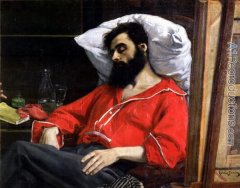Artist's Colour Guide

The board game Othello has written on its box ‘a minute to learn, a lifetime to master’. I always think this statement holds very true for Artist's Colour Theory too. I am very aware that I read and heard the things I’m going to write here many times before they finally sank in.
Two things help you learn when you are studying the properties of colour. Firstly learning for yourself, for which there is absolutely no substitute, but also reading the same topic presented to you by different authors (who will inevitably approach it in different ways) until it clicks. So, here’s my contribution and I hope it helps.

First of all it’s useful to know that most artists (digital artists being an exception) work with ‘reflected’ light as opposed to ‘emitted’ light. Emitted light comes directly from a light source such as the sun or a pc screen whereas reflected light is emitted light that has been bounced (or reflected) off a solid surface – in the artist's case, canvas, board or paper for example. All light travels in waves and it is differences in the wavelength of the light that alter the colour we perceive. Any given wavelength, whether its source is emitted or reflected, always produces the same perceived colour but that is where the similarity ends.
The weird fact, which everyone seems to just accept but I for one do not understand at all, is that the primary colours for emitted and reflected light differ. The three primary colours (i.e. those that cannot be created from any others) for emitted light are red, blue and green, whereas an artist’s primary colours (the reflected ones) are red, blue and yellow. Also, if you mix the three primary emitted light colours together you get white light, whereas if you mix the three primary reflected colours together you get a very dark brown paint mix (actually theoretically black). All very bizarre but not really of relevance here so I’ll move rapidly on to discussing artist’s colours.

Summary
The three primary colours (those
which cannot be made from any others) for artists are red, blue and
yellow. Colours have many properties
but they are most commonly described in terms of three : hue, tone and saturation.
Because I am discussing oil painting I
am also going to look at transparency.
Did you like this page?
Copyright Fiona Holt 2024

